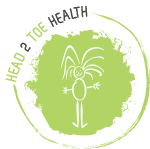Head Checks Can Be a Pain in the Neck
Do you have trouble doing a head check in the car, reversing out of the driveway or checking for traffic as you cross the road? Or, even just neck stiffness that you could do without? We often see patients in the clinic that are suffering with neck pain that is aggravated by doing head checks in the car. The exercise I have below has proven very effective for patients I see in the clinic that report neck pain and tension and difficulty with neck movement, including head checks in their car.
This exercise is super effective to get your neck moving, reduce muscle tension, improve blood flow and ease the pain of your head checks...All in the time it takes for the kettle to boil for your morning cuppa. This set of movements can be done standing or seated before you head off in your car or while you’re at your desk. It can be done on a long journey, if you’re in your car for the day or any other time when you need to get that neck moving for better rotation or improved general movement and more comfort.
Watch this video or keep reading...
Interlace your fingers behind your head placing the side of the hand under the bony protuberance on the skull just behind the ear and then follow these steps to improve each movement direction.
Traction
- Stretch your neck up to the ceiling, encouraging the neck to lengthen with your hands - gently lift your hands towards the ceiling to encourage lengthening.
- Imagining a spring sitting upright and opening up
- Lift, pause, slowly release the upward pressure to gently return the neck to its normal position
- Repeat 3 times
Side bending
- Bend you neck to the side, encouraging the movement with your hands - the upper hand moving to the ceiling to encourage the lengthening of that side of the neck, the lower hand moving toward the floor, encouraging the movement down on this side.
- Move into that side bending position, pause and then return to the middle.
- Imagine a slinky bending to each side
- Repeat 3 times each side
Rotation
- Rotate your neck to look over your shoulder, using your hands to encourage your neck to rotate. If rotating to the right, use the left hand to apply gentle pressure forward and the right hand to encourage movement back on the right.
- Move into the end of that rotation position, pause and then return to the middle.
- Imagine lighting a fire by twisting a stick into some dry leaves
- Repeat 3 times each side
Frequency
These exercises can be performed individually, however for best results then follow through each of these steps in order. Done regularly, you will begin to free up your neck, reduce muscle tension and experience more blood flow to the tissues.
Caution
Of course, this exercise is not for everyone, so move slowly and gently to test the response of the tissues. It amazes me every day how little stimulus we need to place into the body to create change. Be specific and focus on imagining the movement for best results. If you have any dizziness or visual change, cease the exercise and contact your medical team.
Your Next Step
For more effective, easy exercises please check our exercise library on our website. There are many other neck mobility exercises plus neck strengthening exercises. These are my pick of the most effective exercises I've seen and are the exact exercises I prescribe patients I see in clinic.
Written by Dr. Jess Harvey B.Sc. (Anat, Phys), B.Ap.Sci (Comp. Med.), Ma Osteo., Registered Osteopath and Director of Head 2 Toe Health.
We provide Osteopathy, Acupuncture, Massage, Life Coaching and Counselling in Springwood (Brisbane) and Oxenford (Gold Coast). We aim to get you as well as possible, as fast as possible, permanently. We believe in a thorough approach to restoring and maintaining health and address many aspects of our lifestyles that can contribute to pain, stiffness, dis-ease and disease. For any further information, please contact us on info@head2toehealth.com.au or 07) 3208 8308.
This information is intended as a general guide only and is not specific for any particular condition or situation. This information is for educational purposes only. Please seek specific advice for your individual circumstances.
